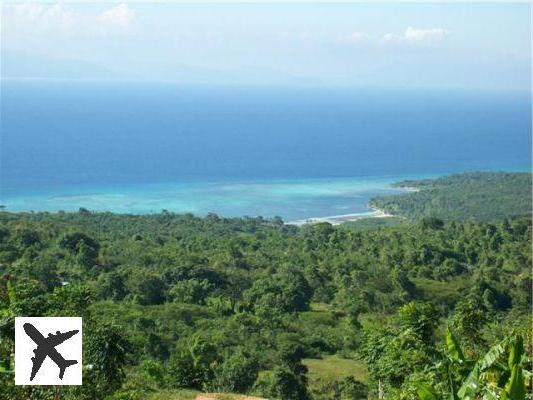
Vasseur was replaced as governor by a man named Chavalier de Fontenay. Now here’s where things started to swing the way of the Spanish, who no longer had wacky slave antics to serve as opportunities for attack. Apparently them pirates liked their matelotage, because in 1653 Vasseur was assassinated by his own followers. He was apparently hoping to give the pirates a healthy dose of heterosexuality, after hearing about a state of homosexual union called matelotage that was supposedly common among the Tortugans. He also, in 1650, imported a few hundred prostitutes into Tortuga. He gave the English colonists (not the pirates, mind you) the boot and completely wiped them out by 1641.
#TORTUGA ISLAND HAITI FULL#
In 1640, these merry buccaneers began dubbing themselves the Brethren of the Coast.Īlso in 1640, Jean de Vasseur (Remember the guy who erected the fort? Him again.) is commissioned to take full control of the island. The pirates and privateers of Tortuga are mostly English and French, but other Europeans (especially the Dutch) are also represented. Let's take a look at where we are and what Tortuga’s demographics are like. Okay, let’s not plunge headlong into this one. Christopher immigrated and established tobacco plantations around this time. In addition, the population of Tortuga swelled when colonists from severely overpopulated Barbados and St. Props to Spain for being so doggedly determined, but the next year, 1639, the expelled colonists returned and snatched back the island, refortifying it against any future attacks. After all the drama was over, the French and English colonists, that had managed to flee Tortuga while all the badness with the invading was happening, crept out from under their respective rocks and slunk back to Tortuga, not spurned so easily from a residence they had come to rather like.Īpparently the problem with the failed plantations and slaves running amok hadn’t sorted itself out, because in 1638 the Spanish returned to attack again and successfully expelled (at least for the moment) the inhabitants of Tortuga. The English forces there were made of stronger stuff than the Spanish anticipated and were successful in defending themselves. However, after this little victory the Spanish moved on, abandoning Tortuga for the time, to try their hand at taking down the Isle of Providence ( Santa Catalina). Well, Greg and the boys do a pretty decent job of the thing and they managed to seize control of Tortuga and snuff out quite a few Englishmen while they’re at it. So anyway, the Spanish basically took advantage of this moment of weakness, thus the ensuing attack of Captain Greg, whose full name is far too bloody long for me to type again. The English can thank deserter John Murphy for that one. Spanish forces, led by Captain Gregorio de Castellar y Mantilla, had gotten wind that the slaves of the English colony had gotten out of control and the plantation managers had hightailed it out of what was rapidly becoming a bad situation. In addition to the French population of Tortuga, an English community arose, which led to the usually kind of colonial squabbles you'd expect the geographic proximity of two rival powers to cause. This greatly strengthened the small island and marked the point in history where Tortuga's popularity as a buccaneer outpost soared. His training as an engineer enabled him to see the construction of the 24-gun Fort de Rocher to completion. It was a French governor named Jean le Vasseur's idea to build a fort by Tortuga's harbor to use to defend the island from the Spanish. The settlers were initially hunters (the term buccaneer arises from " boucan", the French name for the meat they barbequed) but quickly learned piracy was a much more lucrative venture and began making the regular raids on the Spanish colonies of Hispaniola that history best remembers them for. Tortuga had rich, fertile soil, sources of fresh water, and would be relatively easy to defend if the need ever arose.

The Spanish had driven the French settlers off of Hispaniola in the 1630's and the refugees turned to the 25-mile-long island of Tortuga as a hopeful safe haven. This node is intended to discuss somewhat at length the history of Tortuga during its era of buccaneer activity and is best read with Fifteen Men on a Dead Man's Chest blaring from your stereo.

The island's name, Tortuga, is Spanish for "turtle." Tortuga was a small island a little off the coast of what is now Haiti (but was then Hispaniola)that became the base of operations of early buccaneers in the 17th century.


 0 kommentar(er)
0 kommentar(er)
